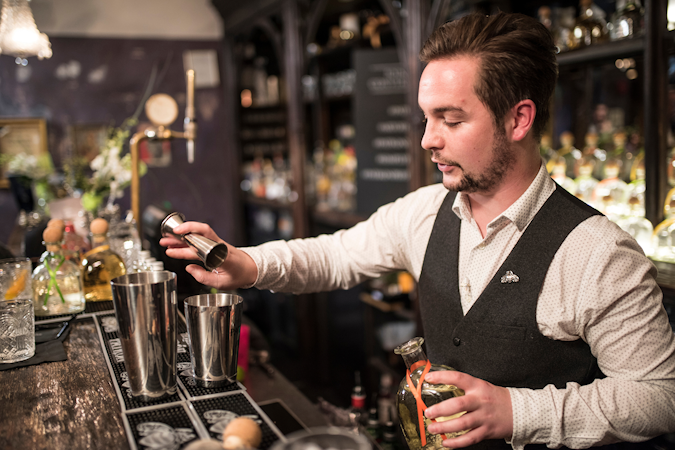Each year has its challenges and the toughest and most threatening to the future prosperity of the on-trade hit home at the beginning of 2017 – the proposed rises in commercial rateable values (RV). While other business sectors saw rises of between 11.4% and 12.5% in RV, huge increases were reported to the SLTA, some in excess of 600%.
This single issue could have had a devastating effect on the industry but the SLTA – along with our coalition partners the British Hospitality Association (BHA) and the Scottish Tourism Alliance (STA) led the campaign to bring about a reversal in the proposal to increase business rates in the licensed trade.
There was a collective sigh of relief when the Finance Minister announced a temporary 12.5% business rates cap (rates payable) for hospitality and licensed trade businesses. However, it must be remembered that this is only a temporary measure and the RV uncertainty remains very much at the top of our members’ list of concerns.
In the SLTA’s State of the Industry Insight Report in the summer, some 76% of respondents said the commercial rating system continued to be the biggest issue they face, despite Government interventions to temporarily cap business rates.
The long-awaited Barclay Review of Business Rates was released in August, making 30 recommendations to the Scottish Government. While some proposals would help the industry the main issue of introducing a replacement system where rates calculations are equally applied to all business sectors was not included in the report – despite the Review Group acknowledging that the system of valuing hospitality and licensed businesses is flawed and unfair.
It is now up to the Scottish Government to decide the next steps and support the industry rather than hindering it.
Meanwhile, the lowering of the drink-driving limit in December 2014, without the lowering of the penalties to truly bring us in line with Europe, continues to hit the on-trade. Opinion suggests that this has had a greater negative impact than the introduction of the smoking ban in public places.
The year ahead
Addressing imbalances in the commercial rating system, competition with the EU in respect of tourism VAT, mandatory training requirements and Government intervention/interference will be major issues for the on-trade in 2018.
However, there are also other issues lurking in the wings: smoking in outdoor areas; portion control in out of home eateries (OOH) through possible “calorie capping”; deposit return scheme; and supermarkets selling draught beer and operating bars within stores to name just a few.
Working with the Scottish Government
The situation has certainly improved but there still needs to be a greater recognition of the contribution Scotland’s pubs and bars contribute to tourism and the economy in general. Scotland’s pubs, bars and hospitality sector are integral to the Scottish economy with the sector contributing £1.5 billion and generating in excess of £900 million in tax revenues. Scotland’s on-trade sector alone directly employs over 43,000 people – 40% of them are under the age of 25.
The licensed trade contributes of one of Scotland’s major sectors – tourism, an industry in which the Government wants to see continued growth. Scotland’s pubs and bars play a major role in the tourism industry as well as the economy – 58% of all visitors and 71% of all international visitors visiting one of our 4,937 pubs and bars.
So it is imperative that the industry operates on equal footing with other business sectors and there needs to be far less negative Government intervention and interference. In other words: “Give us a break.”
There is also a requirement for more support for retailers serving rural and tourist locations. In our State of the Industry Insight Report 46% reported a decline over the first half of 2017 versus the prior year. Village pubs are integral to tourism and the community within rural areas, and this decline is likely to lead to further closures – having a wider impact on tourism and employment.
Working with Westminster
The United Kingdom is one of only four countries not to take advantage of a reduced rate of VAT for the tourism industry. A reduction in tourism VAT in the hospitality sector was the second most important issue highlighted in our State of the Industry Insight Report and is a must if the industry is to compete with EU countries, particularly after Brexit.
Brexit
It is, of course, difficult to predict what will happen post-Brexit. The current Brexit negotiations are shambolic and there is no clear direction on where we are heading. But whatever happens employing European workers could be a significant problem for the industry, even if they are allowed to remain.
We’re already seeing European workers starting to leave Britain over concerns about their status after Brexit. With around 25% of workers in the hospitality industry citizens of other EU countries, any exodus will be a major problem. Coupled with the pound’s dramatic fall against the euro, both factors only discourage European workers from working in the UK.
Cautious optimism
Although there are a number of issues looming for the on-trade, some of which could have a detrimental impact on our industry, we need to remain optimistic about our future and it is our hope that the Government takes on board the benefits, both economical and social, that our sector brings to Scotland.
Certainly from a tourism aspect there should be optimism. The benefits of a low exchange rate will make Scotland more attractive to foreign as well as domestic visitors. And Scotland also has the added benefit of still being considered a “safe destination” with amazing scenery, vibrant towns and cities, an abundant larder of fantastic food and drink and, of course, a friendly welcome.

